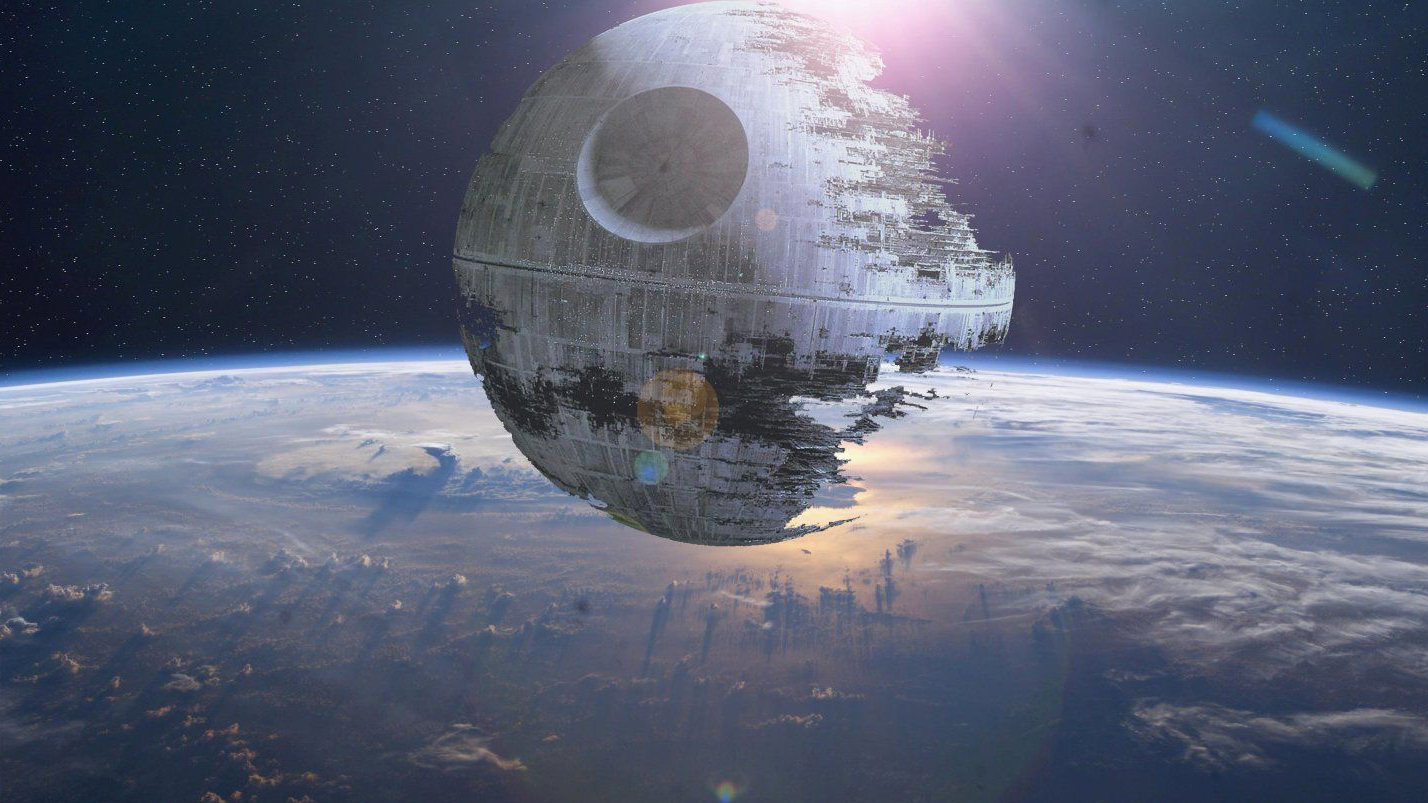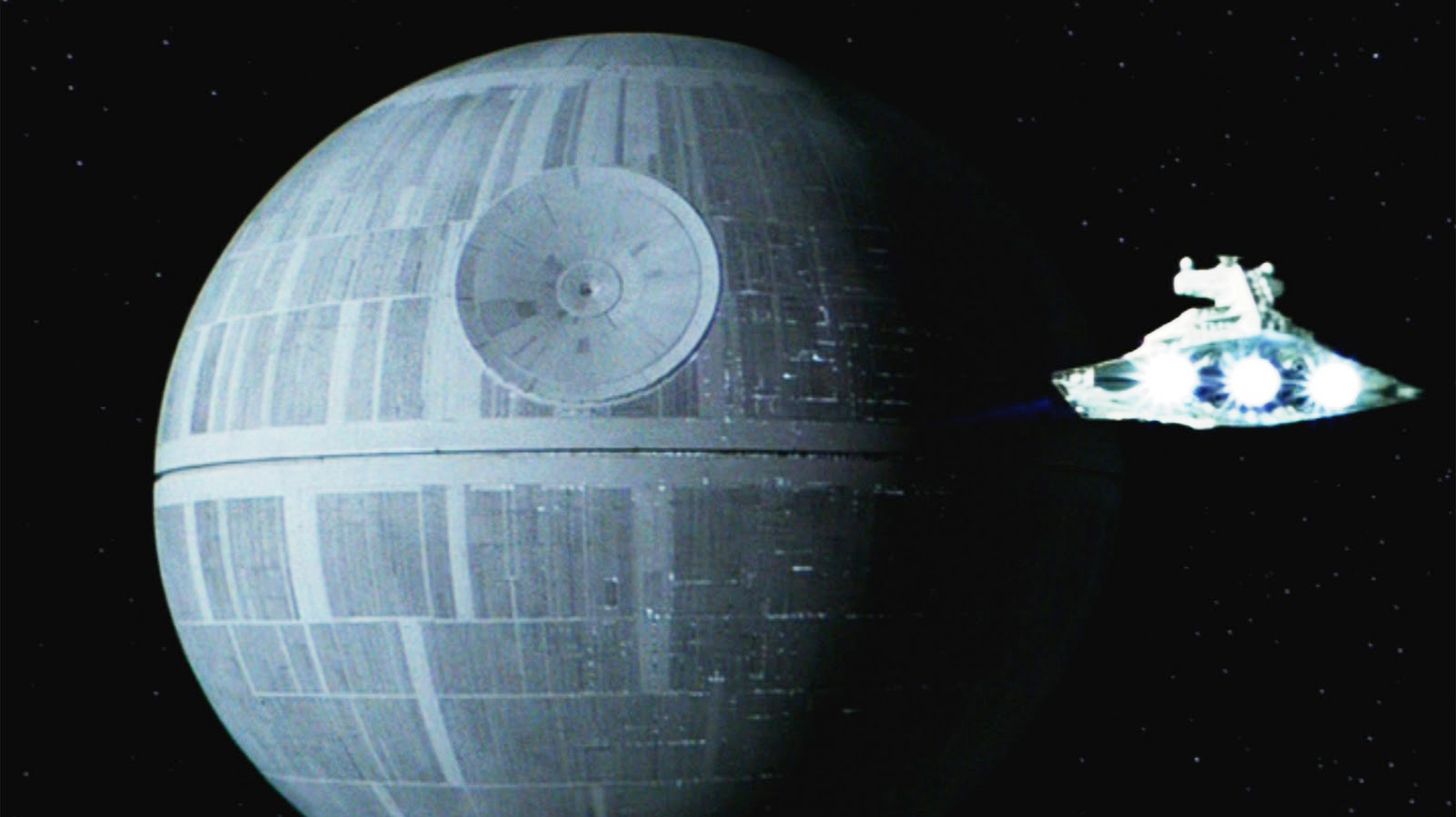
"Don’t be too proud of this technological terror you’ve constructed. The ability to destroy a planet is insignificant next to the power of the Force," declared Darth Vader, to a pigheaded Admiral Motti after he gloated about the undefeatable power of their new battle station in A New Hope.
Although the warnings of the Dark Lord did ultimately ring true and despite several subsequent annihilations, the Empire’s intimidatingly designed moon-shaped base continues – as will be reinforced in Star Wars: Rogue One – to be a looming threat in the Star Wars universe. This iconic symbol of mass destruction has, in various guises and stages of construction, made appearances in all but two movies to date, an unstoppable force to be reckoned with.
"The sets were really kind of simple but complicated and thus believable," says Oscar-winning set decorator Roger Christian, who worked on the original interiors of the Death Star at Elstree Studios. "It looked like a functioning Death Star. [Production designer] John Barry wanted it darker so that it was almost black – to express that kind of evil look. It was just perfect in its simplicity: in a way like Albert Speers’s architecture design in Germany, which was simple but very compelling when you looked at it. That was kind of an inspiration," he says, referring to the imposing design work of Hitler’s infamous chief architect.

In contrast to the lived-in look of the Millennium Falcon, which Christian constructed using aeroplane scrap parts, the Death Star had a different approach and aesthetic. "It wasn’t like the used, old Tatooine world or the Falcon world, it was a much more engineered and precise world. We had to find anything that could be much newer looking; more like [what was accomplished] in Stanley Kubrick’s 2001."
The set decorator-turned-filmmaker has fond memories of working with production designer John Barry. "His talent was to understand what visually would express a character’s attitude. It was a huge set and expensive so we used this special back-forming machine and John found that he could back form plastic panels and stick those up so it had a kind of uniformity."
The Death Star’s trash compactor set proved to be another challenge for Christian. "We built the pit and filled it with water and then I realised we were going to have the actors in there [laughs]! So I couldn’t put all the heavy scrap that looked really good in there as they would’ve got hurt and it would’ve sunk because it was too heavy," he reveals. "In the end I got the plasterer’s shop to make them into polystyrene. The problem was whenever polystyrene breaks you see the white, so we also had to inject it so it wouldn’t spoil the shot."
With Rogue One hinging on the recovery of the plans to the battle station, all eyes will be on how successful Gareth Edwards and his creative team have been in replicating the now iconic 40 year old design.
Get sneak previews, exclusive competitions and details of special events each month!
"So far, with what JJ Abrams achieved in The Force Awakens, they’ve been very reverent [to the originals] so it will certainly be interesting to see," enthuses Christian. "When I was on the set of the original it was just awesome and when you see it on film it’s believable. To me that’s why the design endures: it doesn’t look like a science fiction set."
You can read the rest of SFX magazine's Star Wars: Rogue One coverage in the new issue - out now. Alternatively, subscribe to future issues here.

SFX Magazine is the world's number one sci-fi, fantasy, and horror magazine published by Future PLC. Established in 1995, SFX Magazine prides itself on writing for its fans, welcoming geeks, collectors, and aficionados into its readership for over 25 years. Covering films, TV shows, books, comics, games, merch, and more, SFX Magazine is published every month. If you love it, chances are we do too and you'll find it in SFX.


